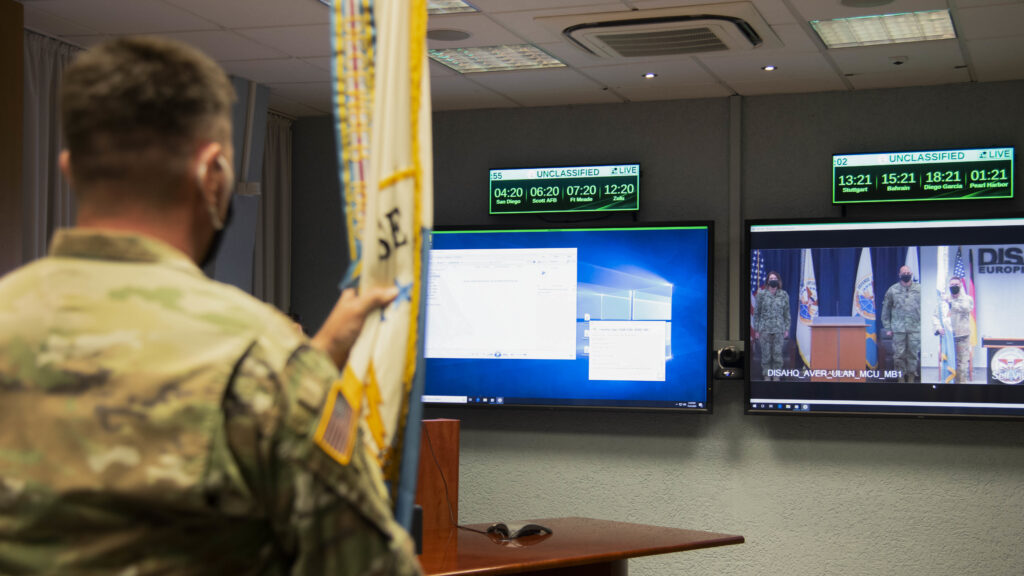
Among its adaptations to the COVID-19 pandemic, DISA facilitated remote change-of-command ceremonies.
ALBUQUERQUE: The Defense Information Systems Agency places itself at the central node between enterprise software and its adoption by the Department of Defense in its new strategy unveiled today. That means DISA is helping the rest of the Pentagon adopt cloud services, get better at cybersecurity, and most especially, buy the software they need from the commercial market if it can be found there first.
These changes were underway before the pandemic, but the response to the virus has exacerbated those trends.
With the pandemic shifting the Pentagon’s desk jockeys towards remote work, DISA has already taken an outsized role facilitating how the whole of the department interacts together online. Among its adaptations to the pandemic, DISA has helped facilitate remote change-of-command ceremonies.
“Because of the planning efforts we undertook in 2019, DISA was able to turn on a dime to support the Department of Defense and the whole-of-government response to the COVID-19 pandemic,” said Navy Vice Adm. Nancy A. Norton, director of DISA and commander of Joint Force Headquarters-Department of Defense Information Network.
The strategic plan is more a framework guiding what contracts will be pursued than an announcement of any contracts, but there are two contract vehicles mentioned that deserve special consideration. The recent award of long-running Systems Engineering, Technology, and Innovation and ENCORE III vehicles means DISA’s plans are back by up to $25 billion, allotted to spend over the next decade.
The strategic plan notes that DISA rolled out support for teleworking services such as video conferencing at a rate five to ten time greater than its rate of adoption before the pandemic.
This leaves DISA well positioned for its central task over the next few years: figuring out how to protect the personnel and mission of the Defense Department from malicious actors or human failure.
This updated strategic plan focuses on cyber defense, the cloud and enterprise solutions. One crucial component of network defense is consolidating all of the Pentagon’s various Fourth Estate networks into what they call Defense Enclave Services. DES is a single system, administered by DISA, in a way that avoids redundant acquisitions.
Under the almost-catchy moniker of “Adopt Before We Buy and Buy Before We Create,” the DISA strategic plan outlines a preference for looking at what already exists for meeting capabilities requests. First, DISA will try to meet a need with software that is already in use in the military. Failing that, the policy is to look for items already on the enterprise market, allowing the Pentagon to harness commercial innovation so long as it meets security standards. Only if both of those requirements are not met will DISA set to work engineering a new answer.
Improved cybersecurity is the third part of the strategic plan, and one that makes it possible to use any software without putting others at risk. An integral part of this program is the move to Cloud-Based Internet Isolation, which prevents most users most of the time from actually malicious downloading files onto computers. (Cloud-based browsing is expected to yield substantial cost savings, as it reduces demands on bandwidth.)






















